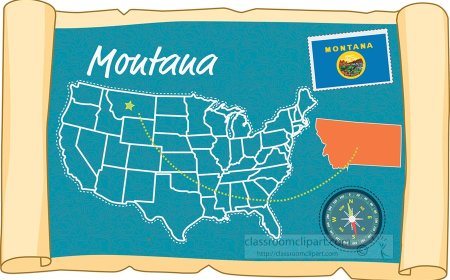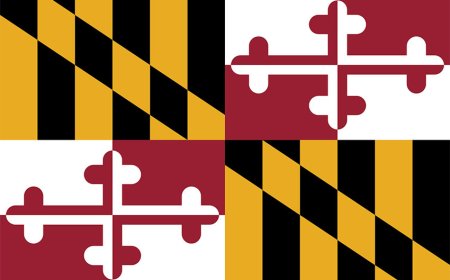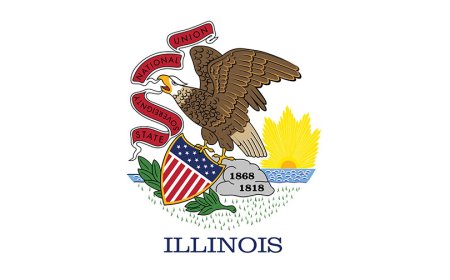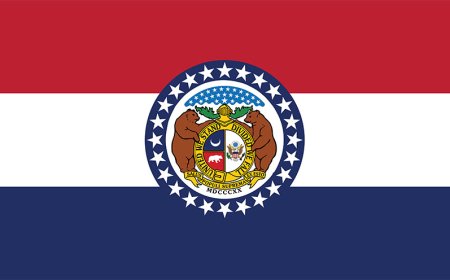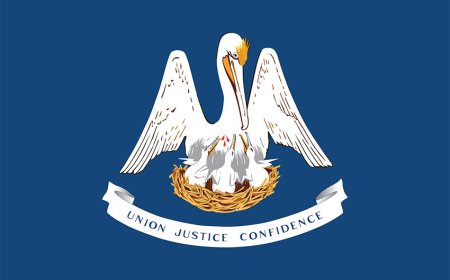Oregon for Kids: Fun Facts, History & Geography of the Beaver State
Explore Oregon with this kid-friendly guide! Learn fun facts about the Beaver State, its geography, history, famous landmarks, and wildlife. Perfect for students and curious explorers.
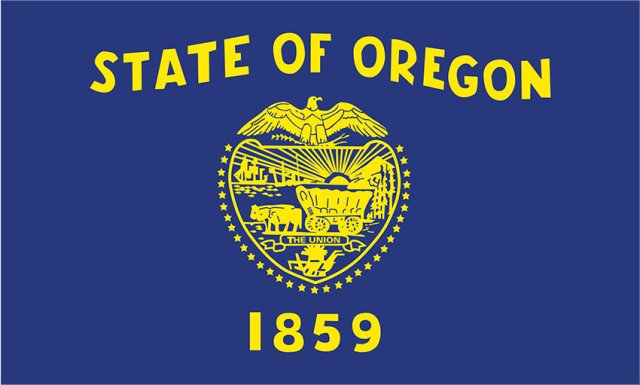
Introduction
Oregon, known as the Beaver State, stretches from the rugged Pacific coastline in the west to the sagebrush plains of the High Desert in the east. This diverse landscape is home to towering volcanoes like Mount Hood, deep forests of Douglas fir and western red cedar, and fertile valleys such as the Willamette—where over two million people live. From the earliest Native American tribes through pioneer settlers on the Oregon Trail to today’s tech innovators and craft brewers, Oregon’s story is one of exploration, adaptation, and respect for the natural world.
Facts Box
- Name & Nickname: Oregon (“OR-ih-gun”), The Beaver State
- Capital & Largest City: Salem (capital), Portland (largest)
- Statehood: February 14, 1859 (33rd state)
- Motto: She Flies With Her Own Wings
- Bird / Flower / Tree: Western Meadowlark / Oregon Grape / Douglas Fir
- Area & Population: 98,381 mi²; ~4.2 million (2020)
- Highest / Lowest Point: Mount Hood (11,249 ft) / Pacific Ocean (0 ft)
History
Oregon’s history begins long before European explorers set foot on its shores. For thousands of years, Indigenous peoples—including the Chinook, Klamath, Nez Perce, Umatilla, and many others—lived along its rivers, coasts, and high desert plateaus. They fished salmon in the Columbia and Willamette Rivers, hunted deer in the forests, and developed intricate trade networks by canoe and on foot. Their deep understanding of the land’s plants and seasons sustained vibrant cultures across what would one day become Oregon.
In 1805, the Lewis and Clark Expedition arrived at the Pacific Ocean after an arduous two-year journey sponsored by President Thomas Jefferson. Meriwether Lewis and William Clark spent the winter of 1805–06 at Fort Clatsop near today’s Astoria, mapping the coast, collecting specimens of plants and animals, and forging relationships with local tribes. Their journals and maps opened the region to American and European awareness, though fur trappers and traders had already arrived in small numbers.
During the 1830s and 1840s, the promise of fertile farmland in the Willamette Valley drew waves of settlers westward on the Oregon Trail—a 2,000-mile overland route beginning in Missouri. By wagon train, more than 300,000 pioneers braved mountains, deserts, rattlesnakes, and disease to claim land under the Donation Land Claim Act. Towns such as Oregon City and Salem grew along rivers, and missions, schools, and churches sprouted up in the burgeoning territory.
On February 14, 1859, after years as a U.S. territory, Oregon was admitted to the Union as the 33rd state. In the decades that followed, railroads connected Portland to the rest of the country, and steamships plied the Columbia River. Timber became the backbone of the economy, with sawmills slicing Douglas fir and western red cedar into lumber that built towns across the West.
The early 20th century brought huge dams on the Columbia River—like Bonneville (completed 1937) and Grand Coulee (1939)—providing hydroelectric power that fueled war-time industries and post-war growth. Agriculture diversified into orchards of apples, pears, berries, and world-renowned vineyards in the Willamette Valley. After World War II, Oregon’s population and cities expanded rapidly.
In the late 20th and early 21st centuries, Oregon blended its pioneering spirit with innovation. Portland became known for craft beer, food-cart cuisine, and environmental activism. A “Silicon Forest” of high-tech firms—led by Intel—took root in the suburbs north of Portland. Meanwhile, conservation movements preserved old-growth forests and restored salmon runs, balancing economic growth with the state’s legacy of respect for its natural landscapes. Today, Oregon’s history is still unfolding, shaped by the people who call the Beaver State home and the land they continue to explore, protect, and celebrate.
Landmarks and Attractions
Oregon’s natural and man-made wonders draw visitors from near and far. Along the coast, haystack-shaped sea stacks rise from the surf at Haystack Rock near Cannon Beach, where tide pools teem with crabs and sea stars. Inland, Multnomah Falls plunges 620 feet in two tiers within the Columbia River Gorge, and you can hike to a viewpoint or cross the historic Benson Bridge. In central Oregon, Smith Rock’s sheer cliffs challenge rock climbers, while nearby rivers offer white-water rafting. At Crater Lake National Park, your eyes will marvel at the lake’s sapphire depths—formed when Mount Mazama collapsed more than 7,000 years ago—and you can drive or bike around the rim. From sandy beaches to volcanic calderas to world-class ski slopes on Mount Hood, Oregon’s attractions celebrate both adventure and awe.
State Symbols & Emblems
Oregon’s symbols honor its history and environment. The state flag bears a circular seal depicting mountains, forests, farmland, ships, and a banner reading “State of Oregon 1859.” On the reverse side is a simple gold beaver, Oregon’s official animal, which once fueled a booming fur trade. The Douglas fir—tall, sturdy, and evergreen—is the state tree, while the bright yellow Oregon grape blooms in spring as the state flower. The Western meadowlark’s cheerful song marks fields and roadside shoulders across the state. These emblems appear on license plates, school logos, and souvenirs, reminding students and travelers alike of the natural wealth and pioneering spirit that define Oregon.
People, Culture & Economy
Oregon’s people blend creativity, industry, and a love for the outdoors. Portland’s food-cart pods serve cuisines from around the world, and its dozens of microbreweries have made the city a global beer destination. In rural communities, farms and vineyards produce hazelnuts, berries, and world-class Pinot noir in the Willamette Valley. High-tech companies in the “Silicon Forest” near Portland design computer chips and software, while timber mills in the coast range supply sustainably harvested lumber. Cultural festivals—from the Portland Rose Festival to the Pendleton Round-Up rodeo—celebrate history, art, and community. Authors like Beverly Cleary and innovators like Nike co-founder Phil Knight hail from Oregon, showing that big ideas can grow here.
Climate, Ecosystems & Conservation
Oregon’s varied climate zones support rich ecosystems but also bring challenges. Western Oregon’s marine climate produces wet, mild winters and dry summers, nurturing old-growth forests of Douglas fir, western red cedar, and hemlock. Eastern Oregon’s high desert sees hot summer days and crisp winter nights, where sagebrush and juniper dominate. Rivers such as the Willamette and Columbia sustain salmon runs, beaver wetlands, and waterfowl migrations. Conservation efforts include restoring salmon habitat by modifying dams, replanting riparian forests, and carefully managing controlled burns to reduce wildfire risk. In city parks and national wildlife refuges, Oregonians work to protect pollinators, preserve native plants, and balance recreation with ecosystem health.
Government, Education & Everyday Life
Oregon’s state government—a governor and a bicameral legislature—meets in Salem to pass laws on education, environmental protection, and transportation. Students attend public schools that emphasize outdoor learning, and many districts organize field trips to forests, rivers, and historical sites. At the college level, Oregon State University in Corvallis leads in marine sciences and forestry, while the University of Oregon in Eugene excels in journalism and the arts. Everyday life for Oregonians might include morning commutes on Portland’s light rail, weekend hikes in state parks, or berry-picking at a family farm. Whether studying salmon biology or sampling marionberry pie, young learners find that Oregon’s government and schools encourage curiosity, stewardship, and community involvement.
| Word | Definition |
|---|---|
| Statehood | The date when a territory officially becomes a state in the United States |
| Willamette Valley | A fertile region in western Oregon known for farming and wineries |
| Cascade Range | A mountain range running through Oregon with many volcanoes |
| Crater Lake | The deepest lake in the United States, formed in a collapsed volcano |
| Timber | Wood prepared for building or other purposes |
| Salmon | A type of fish important to Oregon's rivers, culture, and economy |
| Pioneers | Early settlers who traveled west to live in Oregon during the 1800s |
| Logging | Cutting down trees for timber |
| Volcano | A mountain that can erupt with lava and ash |
| Trail | A path or route, like the Oregon Trail used by pioneers |
Kid-Friendly Summary: Discover Oregon!
Oregon is an exciting state in the Pacific Northwest of the United States. It has tall mountains, volcanoes, rivers, forests, and even a super-deep lake called Crater Lake! Long ago, pioneers traveled along the Oregon Trail to settle here. Today, Oregon is known for its amazing nature, yummy berries, and friendly beavers—its official state animal. Whether you love hiking, fishing, or exploring cool places, there’s something fun for everyone in Oregon!


















































